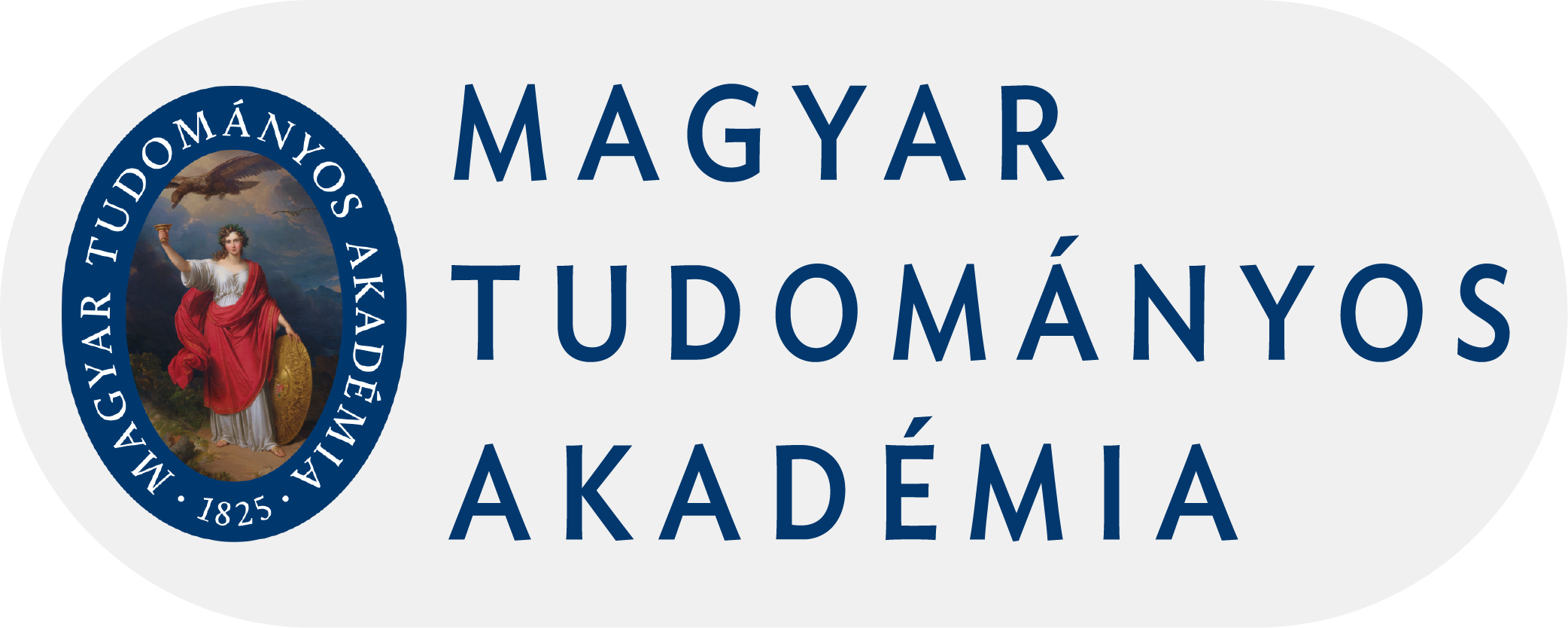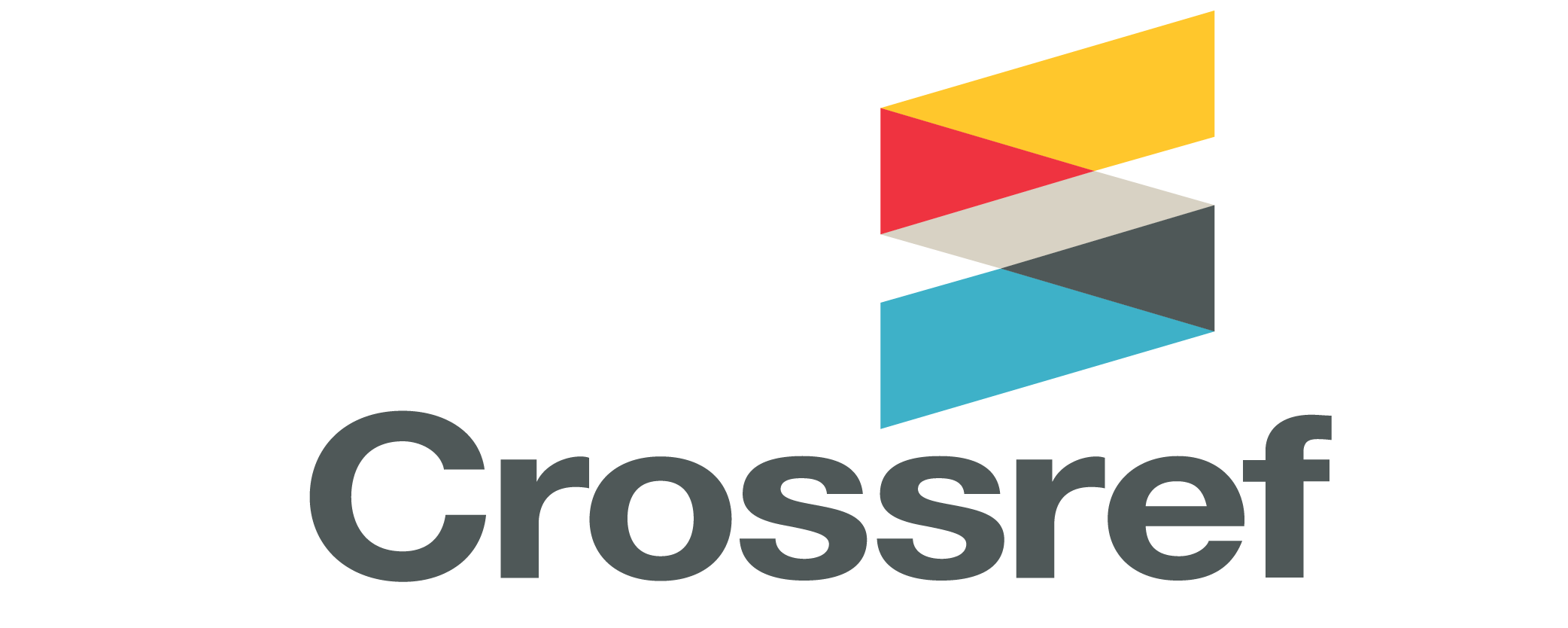Search
Search Results
-
Fruit bearing shoot characteristics of apricot and sweet cherry cultivars in Hungary
107-110.Views:750: Our study was carried out on 23 apricot and 9 sweet cherry cultivars in February 2005. Fruiting laterals were classified into four groups (0-10 cm, 10-20 cm, 20-40 cm and >40 cm) and then the density and setting of flower buds were evaluated and expressed as bud/cm. The flower bud density of four types of fruit bearing shoots and the changes in the frost resistance were studied. Shoots were collected from a young orchard in Gone (apricot), Siófok (sweet cherry) and Nagykutas (sweet cherry). There were significant differences among the cultivars in the density of flower buds. The number of flower buds/cm shoot length ranged between 0.91 and 2.20 in the average of the different fruit bearing shoot types on apricot. Based on the results, the bud density of shorter shoots is generally higher on apricot, but this is not valid for all cultivars. For cvs. Magyarkajszi and Ceglédi bíborkajszi, the highest flower bud density was detected on shoots of medium length (10-40 cm). There were fivefold and almost twofold (1.85) differences in bud density among cultivars on shoots shorter than 10 cm length and longer than 40 cm length, respectively. The ratio of the bud densities of the different types of shoots also ranged between wide boundaries. For cvs. Bayoto, Toyesi and Toyiba this ratio was 2.5-3.5, while for cv. Magyarkajszi it was 1.3.
In the average of fruit bearing shoots on sweet cherry, cv. Bigarreau Burlat (1.10 bud/cm) and cv. Germersdorfi 45 (0.61 bud/cm) had the largest and the lowest flower bud density, respectively. Among the fruit bearing shoots, the largest flower bud density was in the group of 0-10 cm fruiting laterals. Among cultivars, cv. Bigarreau Burlat had the largest bud density. In the groups of n- i 0 cm, 10-20 cm, 20-30 cm and 30-40 cm fruiting laterals, the lowest flower bud density was for cv. Linda, cv. Germersdorfi 45, cv. Ferrovia and cv. Sunburst, respectively. On cvs. Van and Bigarreau Burlat, large numbers of double-set flower buds were observed on the fruit bearing shoots longer than 20 cm. Fruit setting differed on the different types of fruit bearing shoots, with the lowest value measured on above 40 cm shoots. The highest fruit setting was observed on cv. Katalin, while the lowest value was measured on cv. Germersdorfi 3.
-
Comparison of flower bud development in almond, apricot and peach genotypes
93-98.Views:326The phenological processes of flower bud development of stone fruits during dormancy are not thoroughly known. The yield of these species, especially of almond, apricot and peach is determined basically by dormancy of flower buds, the survival rate of buds during winter frosts and by their ability to develop normal floral organs in the next spring. After the initiation of floral primordia, flower bud development is taking place in continuous space until blooming, though at different speed characteristic to the species. To study flower bud development during dormancy we applied two alternative methods in different genotypes of almond, apricot and peach: (1) examination of pollen development (microsporogenesis), and (2) the measurement of pistil length. The samples were collected from the central part of Hungary during the dormancy period of 2004/2005. The three fruit species differed significantly in the speed of flower bud development, it was the quickest in almond, followed by apricot and peach. In addition to the species, there were significant differences in the process of microsporogenesis and pistil development between genotypes within species and also between the different types of shoots on which the buds were located. On short shoots buds developed at a higher speed, than on long shoots. Based on our observations, on the short shoots the period of endodormancy was shorter with 5-30 days, according to genotypes, compared to the long shoots. This difference, however, decreased to 2-3 days by the time of blooming.
-
The effects of growth regulators in proliferation of Sorbus redliana 'Burokvölgy'
77-83.Views:326The Hungarian cultivar Sorbus redliana 'Burokvölgy' was proliferated on Murashige and Skoog (MS, 1962) medium with half-strength macroelements and 100 mg/1 meso-inositol, 20 g/1 sucrose, 11 g/1 agar-agar. Different combinations of kinetin (KIN), metatopolin (mT), benzyladenine (BA), benzyladenine-ribosid (BAR) and indolebutiric acid (IBA) were tested, and pH was adjusted to 5.6 every case using KOH. The cultures were incubated at 20-24 °C in 8/16 hours dark/light photoperiod for 50-52 days. The main aim of our research was to find the optimal growth regulator and its optimum concentration. Purthermore, to determine the chlorophyll contents of the in vitro propagated plants' leaves. During the proliferation, the highest number of shoots were observed in the case of using BA + IBA, and on the medium containing 0.75 mg/I BA + 0.05 mg/1 IBA 8.93 shoots were found. The addition of KIN + IBA decreased the number of shoots and increased the sizes of leaves — the widest (11.2 mm) and longest (17.8 mm) leaves were obtained on the medium containing 1.00 mg/I KIN + 0.05 mg/1 IBA. The longest shoots (36.46 mm) were found in the case of applying 0.75 mg/1 BAR + 0.05 mg/I IBA. The BA + KIN + IBA combination resulted the shortest shoots. Sometimes not only shoot regeneration but spontaneous rooting was observed during the multiplication. The highest chlorophyll content (1.569 mg/g total chlorophyll, 1.132 mg/g chlorophyll-a, 0.437 mg/g chlorophyll-b) was obtained in the presence of 1.0 mg/I KIN + 0.05 mg/1 IBA.
-
Effect of aromatic cytokinins and explant position on shoot multiplication of Asparagus offi cinalis L.
67-70.Views:363Asparagus offi cinalis has been widely studied, but little information is available about its in vitro response to exogenous cytokinin during shoot multiplication. To study the effects of different cytokinins on shoot multiplication of A. offi cinalis ‘Grolim’, in vitro culture was initiated from shoot segments cultured on media with Murashige and Skoog medium. Effects of different aromatic cytokinins (6-benzylaminopurine, 6-benzylaminopurine riboside and meta-topolin) applied in four concentrations (0.5, 1.0, 1.5, 2.0 mg/l) on shoot multiplication of ‘Grolim’ were tested. Effect of explant position (vertically or horizontally) on the shoot multiplication outcome was also studied. Both the length and the number of newly developed shoots were signifi cantly affected by explant position and cytokinin content of the medium. The highest numbers of shoots (4.9) were produced in the presence of 0.5 mg l-1 6-benzylaminopurine riboside when explants were paced horizontally onto the medium. Although the longest shoots (41.5 mm) developed on explants placed vertically onto medium supplemented with 2.0 mg l-1 meta-topolin, the lengths of shoots developed on medium with 0.5 mg l-1 6-benzylaminopurine riboside were also adequate in both explant position (29.5 and 33.6 mm placed horizontally and vertically, respectively).
-
Development in intensive orchard systems of cherries in Hungary
76-86.Views:566High density central leader systems, the so called "spindle trees" are spreading in intensive stone fruit orchards established for hand picking in Hungary. Results of Brunner (1972, 1990) and Zahn (1967, 1996) inspired the researchers to implement their theories into practice under our climate and special soil conditions. For sweet cherry it is essential to apply an orchard system appropriate for hand picking because of the European market requirements. In intensive sweet cherry orchards two new training and orchard systems are developed and adapted to environmental conditions in Hungary based on previous inventions. The first step of the development is represented by modified Brunner-spindle, which applies the delayed heading of the central leader and the sectorial-double-pruning system from Brunner (1972), resulting intensive orchard of 600-800 trees/ha density, planted on standard vigour rootstocks. Modified Brunner-spindle trees are developed with a central leader and wide-angled branches on it. Light bearing wood is positioned on the central leader and wide-angled branches. During training, shoots for branches are bent or a sectorial double pruning is used. The growth of central leader is reduced by delayed heading, and the strong upright shoots are pinched in summer. Based upon tree size spacing of 5 m between row and 2.5-3 m between trees is recommended, tree height is around 3.5-4 m. This training system is useful for hand-picking; 60-70% of the crop can be harvested from ground. Modified Brunner-spindle is suitable for either standard or moderate vigorous rootstocks. The cherry spindle is an intensive orchard planted with 1250-2300 trees per hectare and it is recommended for sweet and sour cherries on semi dwarf to vigorous rootstocks, depending on soil fertility and quality. Trees are 2.5-3.5 m high, 75-80% of the crop can be harvested from the ground. Permanent basal scaffolds are developed on the basis of the canopy to counteract the stronger terminal growth. The tree is headed only once, after planting, from the following year the central leader grows from the terminal bud. The central leader developed from the terminal bud results moderated growth in the upper parts of the tree head. The strong upright shoots that may develop below the terminal bud are pinched to 3-4 leaves in the summer or removed entirely. The weaker, almost horizontal shoots growing from the central leader form fruiting twigs in the following year if their terminal bud is not removed. Brunner's double pruning is used only once or twice on the permanent basal branches because of its good branching effect. Trials on various rootstocks are running to find optimum spacing and fruiting wood management. The training and pruning guidelines are discussed in the paper. The average crop of bearing years is around 20-30 t/ha depending on site and cultivars. This new system is spreading in Hungary, around 70 ha sweet and sour cherry orchards are trained according to our guidelines.
-
The effect of the intensity and method of pruning on the growth and yield of the apple variety ’Idared’ under conditions of ecological and integrated growing systems
35-39.Views:864Summary: On the Experimental Farm of the Debrecen University at Pallag, a factorial experiment has been started at springtime of 2008 on an orchard of 12 year old apple trees ’Idared’ grafts on M 26 understocks. The first factor was the growing system (integrated versus ecological), the second was the intensity of pruning (strong versus moderate thinning of the crown), whereas the third was the method of pruning (shortening versus thinning of individual shoots). Measurements have been concentrated on shoot growth, flower initiation, fruit set and accumulated yield of two successive seasons. The following conclusions are made.
– In the ecological growing system, strong thinning proved to be beneficial for growth as well as for fruit bearing. – Strong thinning combined with shortening of shoots diminished yield in the first year, whereas
moderate thinning combined with shortening of shoots caused favourable growth and fruit bearing.
– In the ecological growing system, the moderate shoot growth was associated with better flower initiation, which increases the chances of alternate yielding.
– According to our results, the flower initiation of the ‘Idared’ was stimulated univocally by the thinning of shoots regardless of the intensity of pruning.
The right choice of the intensity and method of pruning is a decisive moment of a successful yield in the ecological apple growing system -
Post-effects of cytokinins and auxin levels of proliferation media on rooting ability of in vitro apple shoots (Malus domestica Borkh.) 'Red Fuji'
26-29.Views:468Rooting ability of in vitro apple shoots of 'Red Fuji' grown on proliferation media with different hormone content were tested at three IBA levels in root induction media. Rooting percentage could be slightly increased with an increase in IBA concentration in proliferation media. The highest IBA concentration (3.0 mg 1-1) in root induction media showed strong inhibitory effect on rooting capacity of in vitro shoots. The highest rooting percentage (95%) could be achieved by shoots grown on proliferation media containing TOP or BA+KIN as cytokinins before rooting.
-
In vitro propagation of 'Echo' cultivars of Eustoma grandiflorum (Raf.) Shinn.
87-91.Views:267Eustoma grandiflorum (Raf.) Shinn. 'Echo' Fl cultivars ('Echo White', 'Echo Rose', 'Echo Blue', 'Echo Blue Picotee') were used and multiplication of shoots was evaluated on Murashige and Skoog (1962) basal medium with 11 g/1 agar-agar and 20 g/1 sucrose. To test the effect of BA different concentrations were added: 0.10, 0.25 mg/1 and a culture medium without BA. Differentiation of roots was examined on Jámbor-Benczúr and Marta (1990) basal medium with the same concentration of agar-agar and sucrose. To examine the effect on rooting, various concentrations of NAA were used: 0.5, 1.0, 2.0, 3.0 mg/l. The pH was adjusted to 5.6 in every case using KOH. We studied the after-effect of different concentrations of BA during the acclimatisation. During the multiplication, the cultivar 'Echo White' formed the most shoots and the smallest leaves on the medium with 0.10 mg/1 BA. Fortunately, in the case of this cultivar, the number of shoots was reduced and the length of leaves was increased succesfully on the medium without BA. The other three cultivars developed the longest leaves on the medium containing 0.10 mg/1 BA. Sometimes not only shoot regeneration but spontaneous rooting was observed during the multiplication. Examining the rooting, the highest percent of roots was found on the medium with 1.0 mg/1 NAA, and the cultivar 'Echo Rose' formed the most roots on this medium. Higher concentration (2.0 and 3.0 mg/1) of NAA already reduced the number of roots in all of the cultivars. During the acclimatisation, the percentage of survival was 76.3% and the tallest plants with the longest leaves were found on the multiplication medium with 0.25 mg/1 BA. 'Echo Blue Picotee' gave the best results with the tallest pieces and longest leaves on this medium.
-
Knot formation by Pseudomonas syringae subsp. savastanoi on the in vitro shoots of Sorbus redliana
59-62.Views:371Two strains of Pseudomonas syringae subsp. savastanoi were isolated from Forsythia sp. and Nerium oleander in Hungary in 1997. The effects of growth regulators produced by the bacteria were studied in different experiments. The strains were co-cultured with Sorbus redliana in vitro shoots without being in contact with the plant on solid media. Further culture filtrates in different concentrations were added to the culture medium. The growth regulators presented in the agar caused knot formation on the shoots and on the leaves in both kinds of culture. There were significant differences in the cultural and physiological characters, auxin and cytokinin activity of the strains of different origin.
-
Effects of activated charcoal on rooting of in vitro apple (Malus domestics Borkh.) shoots
98-101.Views:281Rooting of in vitro 'Royal Gala' shoots was studied under different conditions of root induction and root elongation phase. The rooting capacity was affected by both rooting phases. Very high rooting percentage could be reached with both liquid and solid root induction media. Raising the temperature from 22 °C to 26 °C during root induction phase increased the rooting percentage. Presence of activated charcoal in root elongation media can affect the number of roots per rooted shoots and can increase the rooting percentage, the length of roots and the rate of survival depending also on other conditions during rooting. Presence of NAA in root elongation media reduced the number and the length of roots considerably. Favourable effect of activated charcoal on rooting was mainly due to adsorption of NAA.
-
Inheritance of fruit colour and of shoot's pigmentation in the case of interspecific raspberry hybrids
33-36.Views:170In our research, fruit colour and the shoot's red pigmentation were evaluated in the hybrids of Rubus idaeus and Rubus parvifolius crossings. Y and Ys genes beside the T genes determine the fruit colour of interspecific hybrids, which is characteristic for raspberry. For the explanation of the significantly higher results of segregation then expected at the yellow fruit colour hybrids, we have supposed the presence of a second yellow gene (Y2). In the yellow colour, a lot of different shade colours can be identified from light yellow to the apricot colour. In the regulation of the production of yellow and red colour, several other genes can participate also. Identification of these genes would require more additional research. The C gene determines the shoot colour of raspberry and in the case of wild raspberries we have revealed the role of a dominant Pr gene. The Y and Pr genes are descended linked. The value of crossing over is approximately 15%. The anthocyanin production inhibitory effect of the Y gene extends only for fruit. At the shoots of yellow fruit plants, strong anthocyanin production was observed.
-
Rhizogenesis in in vitro shoot cultures of passion fruit (Passiflora edulis f. flavicarpa Deg.) is affected by ethylene precursor and by inhibitors
47-54.Views:263The effects of the ethylene precursor ACC and two inhibitors, AgNO3 and AVG, on root formation were tested in in vitro shoots of passion fruit (Passiflora Midis f.flavicalpa Deg.). The organogenic response was assessed on the basis of percentage of shoot-forming. roots, root number and length. The time course of ethylene production was also monitored. ACC inhibited root formation by delaying root emergence and increasine, callus formation at the basis of the shoots. In addition, ACC caused a marked increase in ethylene production, coupled to leaf chlorosis and senescence with lower rooting frequencies, number and length of roots. IAA supplementation increased ethylene production. Both ethylene inhibitors, AgNO3 and AVG, at appropriate concentrations reduced callus formation at the basis of shoots. AVG increased the number of roots per shoot, but drastically reduced length of differentiated roots. Regarding to leaf pigments, ACC promoted a marked reduction on carotenoids and total chlorophyll, whereas AVG and AgNO3 delayed explant senescence and pigments degradation, not differing from IAA supplemented and non-supplemented control treatments. The results confirm previous reports on the beneficial effects of ethylene inhibitors on in vitro rooting and suggest its reliability to be used as an alternative approach to evaluate sensitivity of Passiflora species to ethylene.
-
Genetic engineering of apple (Malus domestica Borkh.) for resistance to fungal diseases using g2ps1 gene from Gerbera hybrida (Asteraceae)
15-12.Views:371In the present study, g2ps1 gene from Gerbera hybrida coding for 2-pyrone synthase which contribute for fungal and insect resistance was used. The aim was to work out an efficient approach of genetic transformation for apple cvs. ‘Golden Delicious’, ‘Royal Gala’ and ‘MM111’, ‘M26’ rootstocks for improving their fungal resistance using genetic engineering techniques. Adventitious shoot formation from leaf pieces of apples studied was achieved using middle leaf segments taken from the youngest leaves from in vitro-grown plants.
Optimum conditions for ‚direct’ shoot organogenesis resulted in high regeneration efficiency of 0%, 95%, 92%, 94% in the studied apples respectively. Putative transgenic shoots could be obtained on MS media with B5 Vitamins, 5.0 mg l-1 BAP, or 2.0 mg l-1 TDZ with 0.2 mg l-1 NAA in the presence of the selection agent “PPT” at 3.0-5.0 mgl-1. Shoot multiplication of transgenic shoots was achieved on: MS + B5 vitamins + 1.0 mg l-1 BAP + 0.3 mg l-1 IBA, 0.2 mg l-1 GA3+1.0 g/l MES+ 30 g/l sucrose + 7.0 g/l Agar, with the selection agent PPT at 5.0 mg l-1 and were subcultured every 4 weeks in order to get sufficient material to confirm transformation of the putative shoots obtained. Six, seven, one and six transgenic clones of the apples studied respectively have been obtained and confirmed by selection on the media containing the selection agent “PPT” and by PCR analysis using the suitable primers in all clones obtained for the presence of the selection” bar gene (447 bp) and the gene-of- interest “g2PS1” (1244 bp), with transformation efficiency of 0.4%, 0.6%, 0.1% and 0.3% respectively. These transgenic clones were multiplied further in vitro in the presence of the selection agent ‘PPT’ and rooted in vitro. Rooted transgenic plantlets were successfully acclimatized and are being kept under-containment conditions according to the biosafety by-law in Syria to evaluate their performance for fungal resistance . -
Bud-, flower- and fruit-density in stone fruits
59-69.Views:756In 164 varieties of five stone fruit species, counts of flower buds, flowers and fruits set have been performed, regularly, between 1982 and 2002. The critical number and sample size has been determined for the purpose to estimate the yielding potential of peach plantations. For a rapid test, 10 shoots per variety are recommended. In sour cherry and peach varieties, the number and ratio of leaf and flower buds has been assessed on bearing shoots of different length.
The typical flower bud density of 129 peach varieties varies, as a rule, between 0.13 and 1.10 bud/cm. Three groups of flower-bud-densities could be distinguished: low (0-0.40 bud/cm), intermediate (0.41-0.60 bud/cm), high (more than 0.60 bud/cm). About 62% of varieties belong to the intermediate group. Negative correlation has been found between flower density and relative fruit set, whereas positive correlation between flower density and fruit yield.
The results are utilised in the description and choice of varieties, moreover, in choosing of optimal pruning policies. Varieties of high flower bud densities are recommended to be preferred for growing sites with frequent late frosts. Abundantly yielding varieties of low vegetative vigour are to be pruned more severely than those characterised by low yields, vigorous growth and low flower density. Sour cherry varieties, which are inclined to grow "whips" ought to be stimulated to grow longer shoots (40-50 cm per year), than varieties woid of that tendency (30-40 cm).
-
Effect of gelling agents on in vitro development of Amelanchier canadensis ‘Rainbow Pillar’
75-79.Views:407In vitro shoot multiplication responses of Amelanchier canadensis ‘Rainbow Pillar’ were studied on media solidifi ed with different gelling agents. The media were gelled either with 6.8 g l-1 fi brous agar-agar, or 50.0 g l-1 wheat starch, or 20.0 g l-1 Guar gum, or 15 g l-1 Isubgol or 50.0 g l-1 wheat starch mixed with 0.5 g l-1 Phytagel. Shoot cultures were grown for two months, thereafter the multiplication rates (number of newly developed shoots per explant) were counted and the length of shoots were measured. We found that the highest shoot multiplication of Amelanchier canadensis ‘Rainbow Pillar’ occurred on media gelled with Guar gum, while the longest shoots developed on media with Starch. About four-fold shoot number were obtained on media with Guar gum compared to the weakest results found on media gelled with Isubgol. Finally, considering all factors (shoot growth parameters, costs) the most economical gelling agent for Amelanchier canadensis ‘Rainbow Pillar’ was proved to be wheat starch among the tested alternatives which allows a 75.6% cost reduction.
-
Comparison of the growing habit of peach varieties trained to caldron and slender spindle crowns
55-59.Views:351Six peach varieties (’RedMoon’, ’Early Redhaven’, ’Rich Lady’, ’Suncrest’, ’Silver King’, ’Royal Glory’) grafted on seedling stock have been trained alternatively, to caldron (kettle) and to slender spindle, are compared in dormant stage regarding their variety-specific growing habits. According to our results, marked differences have been stated in vegetative vigour of varieties measured as the length, thickness and number of shoots. The caldron crowns displayed more vigour whereas the spindle trees produced more balanced and moderately growing shoots. The differences due to varieties were more conspicuous that due to the training. An intrinsic knowledge of growing habits of varieties may facilitate the development of variety-specific pruning technologies beginning with the training for crown forms.
-
Assessment of fruit firmness of pepper using non-destructive physical measurements, in response to different growing and pruning technologies
59-62.Views:215The European market demands vegetable products of the highest quality and this commercial quality must be maintained till the goods reach the customer. One of these important quality parameters is the fruit firmness of pepper.
The experiments were aimed at to find out the influence of different growing methods (soil or rockwool-based) and pruning technologies (to 1, 2, 3 or 4 shoots) on the yield and fruit firmness of three pepper varieties (HO F1, Karpia Fl and Pritavit F1) which are common in Hungary. Fruit firmness was measured by the non-destructive impact method.
On the basis of the results, in unheated forcing the pruning to 1, 2 or 3 shoots can be suggested for all three varieties, as well as the utilisation of rockwool in their growing.
The non-destructive impact method has been found suitable for testing the fruit firmness of pepper varieties. In the experiments involving different growing mediums pepper stands were found to show significant differences, however the different pruning methods had no significant influence on fruit firmness.
-
The Effects of Some Parameters on Agrobacterium-Mediated Transformation in Muskmelon
46-49.Views:316Some parameters involved in Agrobacterium-mediated transformation in muskmelon Hales best (HBS) were studied. Cotyledon explants excised from 3.5-day-old seedlings were co-cultivated with Agrobacterium tumefaciens harbouring binary vectors which contained GUS and BAR genes. After co-cultivation on a low pH medium, explants were transferred to selective medium, with higher pH, containing Claforan and Finale. The medium was changed every two weeks till shoots were induced. All shoots rooted on MS medium supplemented with 0.3 mg/L IBA. These parameters combined as a whole led to successful transformation. The expression of the introduced gene construct was confirmed by GUS staining of shoot segments.
-
The effect of different cytokinins on chlorophyll content and morphological features of in vitro Nidularium ’Kertész Jubileum’
47-51.Views:357During in vitro multiplication of Nidularium ‘Kertész Jubileum’, 20 g/l sucrose, 5 g/l agar, 100 mg/l inositol, and different concentrations of benzyladenine (BA), benzyladenine-riboside (BAR), kinetin (KIN), meta-topolin (mT) were added to the MKC (Knudson, 1946) basal medium. Furthermore, 0.1 mg/l naphthaleneacetic acid was used to every medium. Number of shoots, length of leaves, number and length of roots, chlorophyll (a+b) content were examined and evaluated with Ropstat statistical software. As compared to the other cytokinin, significantly most shoots were obtained in the case of applying BA. Increasing of BA-concentration (as far as 2 mg/l) enhanced shoot number (from 10.92 to 19.26) but 4 mg/l BA resulted only 6.63 shoot. The less efficient cytokinin was KIN, in most cases no more than about 2 shoot was achieved. Regarding the length of leaves, the higher level of BA effected averagely the shorter leaves (from 24,46 to 7.31 mm). KIN effected significantly the longest leaves (43.4-61.29) in inverse proportion to the concentration. The same cytokinin resulted the most (and the longest) roots with the highest rooting percentages, but more KIN decreased the number and length of roots (from 7.95 to 4.4 and from 38.49 to 22.73 mm). There were no definite correlation between cytokinin concentration and chlorophyll (a+b) content, but the highest doses resulted decreasing (except of meta-topolin which leads to the lowest values). Summarizing, BAR effected the highest contents (mostly more than 1400 μg/g), particularly in the case of 1 mg/l (1807.3 μg/g).
-
Comparative investigation on Hypericum perforatum L. populations of different origin
56-60.Views:375Widespread application for herbal medicines based on Hyperici herba has been experienced in the last few years, especially in the treatment of depression syndrome. As the wild origins could not satisfy the market demands neither in quantitative nor in qualitative respect, the necessity of the development of intensive growing methods has been raised. In the course of our investigations we intended to clear up the morphological and chemical variability among and within populations of different origin in order to start a new breeding program. According to our data, growth dynamics of populations could be characterised by a logistic curve. According to the time of flowering the populations formed early, middle and late groups. Morphological diversity among populations was measurable in differences of flower length, plant height, different leaf types and plant habit, according to which characteristics groups were distinguished. Generally, the accessions were the most homogenous in plant height (CV: 7-15%), followed by inflorescence-lengths (CV: 11-36%) and the least uniform characteristics proved to be the number of flowering shoots (CV: 14-59%). The greatest morphological heterogeneity was experienced in the accessions of wild origin as it has been expected. In the second vegetation period generally a much better homogeneity was obtained, than in the first year. The most outstanding accessions produced 1.2 t of dry flowers and 4 t of dry flowering shoots, calculating to one hectare area. The individual yields varied on a large scale in each population (CV: 18-70%).
The content of hypericin varied between 1,85 and 9,9 mg/g in 1996, and between 0,18 and 2,70 mg/g in 1997, showing high individual divergences. Flavonoid values -including first of all hyperosid, rutin and quercitrin - reached 17-39 mg/g in the first and 15-20 mg/g in the second year, respectively. Individual and seasonal variation was less than in hypericin. A joint high level of these two compound groups seems to have low frequencies.
The superior population were selected for further breeding.
-
The effect of Regalis® (prohexadione calcium) on the reduction of fire blight (Erwinia amylovora) severity in apple trees
61-66.Views:325Due to the lack of effective and non-phytotoxic materials for control of the blossom and shoot blight phase of fire blight in pome fruit trees, two novel control strategies have emerged: shoot growth retardation by bioregulators and applying resistance inducer compounds. Prohexadione calcium (ProCa) is the active ingredient of the bioregulator Regalis® registered in several European countries. The reduction of shoot growth elongation is the most obvious effect of ProCa. Furthermore, it causes significant changes in the spectrum of flavonoids and their phenolic precursors, leading to the considerable reduction of susceptibility to fire blight.
In Poland, potted one-year-old apple trees of cvs. Gala Must grafted on M.26 and Sampion on M.9 (in 2001) as well as Gala Must on P.60 (in 2002) were treated with Regalis® at a range of concentration of 250, 150 or 150 + 100 ppm, respectively. The inoculation of shoots was made with the strain No.691 of E. amylovora (107 cfu/ml), on the 7th and 21st'day after treatments with Regalis. In Hungary, during the years of 2002 and 2003 one-year-old container grown apple trees of the cvs. Idared/M.9 and Freedom/M.9 were treated with the prohexadione-Ca, the active ingredient of Regalis® 100, 150 or 200 ppm, two weeks before inoculation with the Ea 1 strain of E. amylovora (107 cfu/m1).
In Poland, the suppression of fire blight in shoots reached up to 80%, depending on concentration and application time of Regalis®. In Hungary, the effect of prohexadione-Ca treatments, determined by the length of necrotic lesion developed, proved to be better than that of streptomycin used for comparison.
-
Effects of aromatic cytokinins on structural characteristics of leaves and their post- effects on subsequent shoot regeneration from in vitro apple leaves of 'Royal Gala'
41-46.Views:345The effects of different aromatic cytokinins applied in different concentrations and combinations were investigated on the histology of in vitro apple leaves and their post-effects on subsequent shoot regeneration from these leaves were studied. Great differences in the anatomical structure of leaves could be detected originating from media containing different types and concentrations of aromatic cytokinins. The number of regenerated shoots per explant and the organogenetic index were used for the evaluation of the post-effect of aromatic cytokinins on shoot regeneration. The histological structure of leaves used for regeneration and their regeneration response showed a good correlation. When the pre-treatment caused a juvenile-like or less-differentiated structure, the number of regenerated shoots per explant increased and often vitrification also decreased and consequently the organogenetic index also increased. A strong interaction between cytokinin-content (type and concentration) of the pre-treatment medium and that of the regeneration medium could also be detected.
-
The effect of cluster thinning, cluster tipping, cluster shredding and defoliation at the flowering on the vegetative and generative vine performance from Kékfrankos Cv.
63-68.Views:410The cluster thinning is a method of the yield regulation.With the removal one part of the clusters, the yield pro leaf area will be lower, hereby the grape and wine quality will be improved. The regulation of the yield can lead to further advantages: the ratio of the vegetative and generative performance of the vines will improve, the condition of the plants will better, the number of the physiological diseases can be reduced and the growth of the shoots and roots can be promoted. The grape growers make the cluster thinning almost exclusive by creating one cluster shoots. Usually the upper clusters are removed, because the sugar content of these second or third clusters will be lower. The cluster thinning is an easy task, can be done without special skills. It is an effective method improving wine quality, but its use can lead to other problems. The grapes try to compensate the removed clusters. Therefore the clusters will be bigger and thicker, but more sensitive to bunch rot. Moreover the treatment is expensive, because it needs manual work. It is worth to get acquainted and try the new yield regulation methods, which can help to avoid the occurring problems. Our aim is to show the results of our experiment, which was carried out in Eger, examining the red grape cultivar Kékfrankos. During our 4 years long experiment we compared the effects of cluster thinning, cluster shredding, cluster tipping and defoliation at the flowering, on the vegetative and generative vine performance.
-
Effects of different cytokinins on the shoot regeneration from apple leaves of 'Royal Gala' and 'M.26'
69-75.Views:386The effects of different types of cytokinins on the shoot regeneration from leaf explants of apple scion 'Royal Gala' and apple rootstock 'M.26' were evaluated. Regeneration media contained either thidiazuron, or 6-benzylaminopurine, or meta-topolin, or zeatin, or kinetin, or their N9-ribosides, respectively, in the concentration range 0.5 to 8.0 mg 1-1. Effects of 'these cytokinins were evaluated on the percentage of regeneration (R%) and that of vitrification (V%) and on the number of regenerated shoots per explant (SN). Organogenetic index (0I) calculated from these data was used for the evaluation of efficacy of cytokinins. The course of shoot organogenesis also was followed using stereomicroscope. Types and concentrations of cytokinins applied in the regeneration media influenced each parameter significantly and the regeneration answer was strongly genotype-dependent. The best regeneration (SN: 11.08, 01: 7.5) was achieved in `Royal Gala' by using TDZ in concentration of 0.5 mg 1-1 (2.271,1M). There was a clear relationship between the effect on the regeneration efficacy and the chemical structure of cytokinins considering classical cytokinins, namely N9-ribosides applied in less concentration than nonribosides have the same or best regeneration effects except for 6-benzylaminopurine riboside. However, similar relationship could not be detected in the case of 'M.26'. SN was the highest (3.22) using 6.5 mg 1-1 (18.2011M) 6-benzylaminopurine riboside or 8.0 mg 1-1 (21.44 µM) meta-topolin riboside (3.18). SN was not significantly lower (3.12) by using 2.0 mg 1-1 (9.08 1M) TDZ, however, OI was about half as big (0.63 compared to 1.29 or 1.74 with 6-benzylaminopurine riboside or meta-topolin riboside, respectively). 'Royal Gala' had higher organogenetic ability, than `M.26': 3.5-fold higher shoot number per explant and more than 4-fold higher organogenetic index was reached with this cultivar than with 'M.26'. Moreover, the similar developmental stage of shoots could be observed 3-5 days earlier than in 'M.26' and if explants of 'Royal Gala' were further cultured with 3 weeks, SN increased from 11.08 to 24.42 on TDZ-containing regeneration medium, which might suggest higher organogenetic ability, too.
-
Production of transgenic carnation with a heterologous 6-phosphofructo-2-kinase/fructose 2,6-bisphosphatase bifunctional enzyme cDNA
75-79.Views:226Transgenic carnations were produced with a modified mammalian bifunctional enzyme cDNA coding 6-phosphofructo-2- kinaseffructose 2,6-bisphosphatase. Relative activity of this enzyme determines the fructose 2,6-bisphosphate (fru 2,6-P2) cytosolic concentration. This metabolite — as a signal molecule — is one of the carbohydrate metabolism regulators. The regenerated Dianthus chinensis and Dianthus caryophyllus shoots were selected on MS basal medium containing 150 mg/1 kanamycin. Transgene integration was proven by PCR analysis with cDNA specific primers followed by Southern hybridization of DNA isolated from selected green shoots, which survived on kanamycin containing medium, so 3 D. chinensis and 20 D. caryophyllus transgenic plants were produced. Transgene expression were examined by RT-PCR. Transformed and control plants were potted in glasshouse to evaluate the effect of modified fru 2,6-P2 on development, growth and carbohydrate metabolism.










